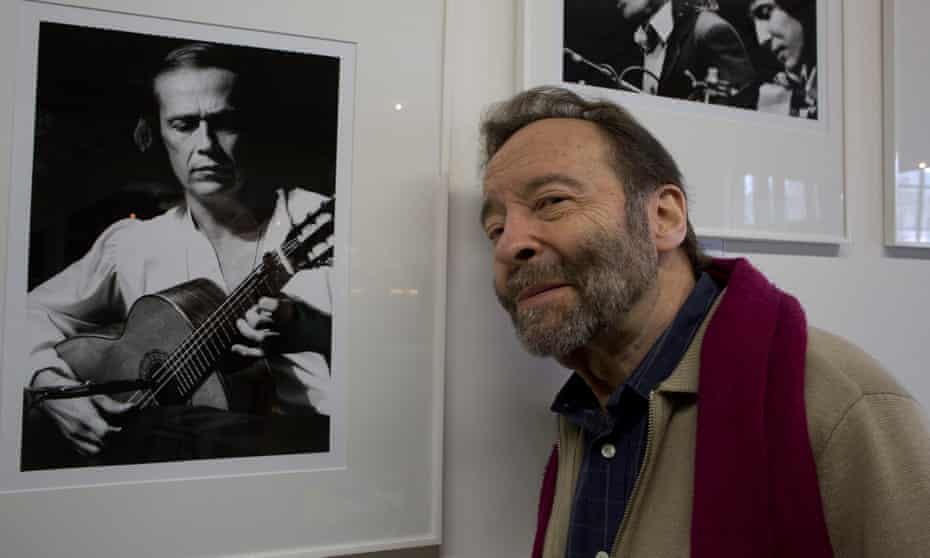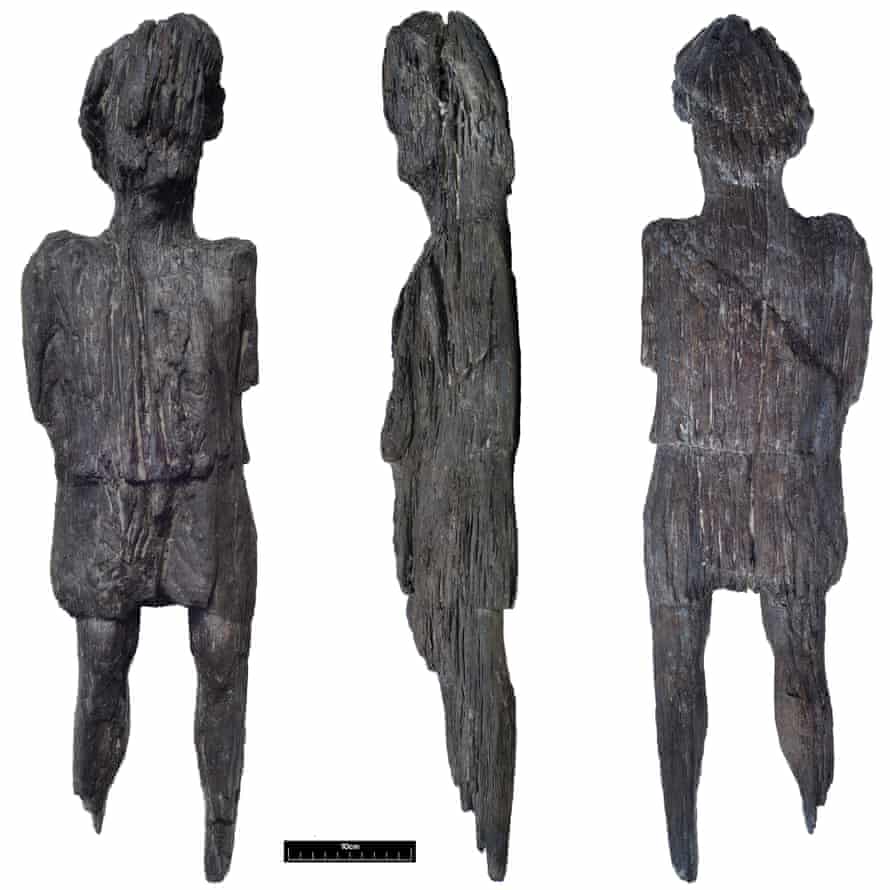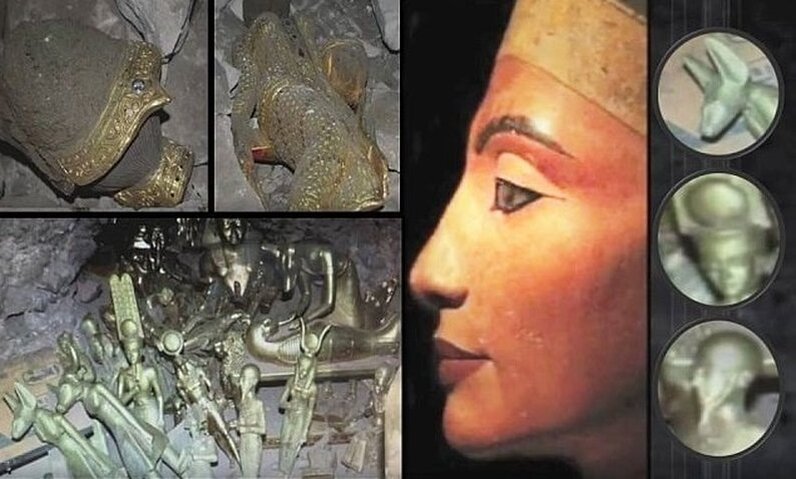Archive
The Netherlands: Template for Ecomodernism’s Brave New World?
By Colin Todhunter 12th December 2022. Find Article Here:-
isaster capitalism and crisis narratives are currently being used to manipulate popular sentiment and push through a set of unpalatable policies that would otherwise lack sufficient political support.
These policies are being promoted by wealthy interests that stand to make billions of dollars from what is being proposed. They seek to gain full control of food and how it is produced. Their vision is tied to a wider agenda aimed at shaping how humanity lives, thinks and acts.
Throughout much of 2022, protests by Dutch farmers have grabbed the headlines. Plans to reduce the Netherlands’ nitrogen output by half come 2030 have led to mass protests. The government talks of the need to move away from animal-based agriculture and its climate-impacting emissions.
This ‘food transition’ often goes hand-in-hand with the promotion of ‘precision’ agriculture, genetic engineering, fewer farmers and farms and lab-made synthetic food. This transition is sold under the banner of ‘climate-friendly’ and piggybacks on the ‘climate emergency’ narrative.
Campaigner Willem Engel claims the Dutch government is not seeking to eliminate farmers from the landscape for environmental reasons. Instead, it is about the construction of Tristate City, a megalopolis with a population of around 45 million extending to areas of Germany and Belgium.
Engel suggests the ‘nitrogen crisis’ is being manipulated to drive through policies that will result in reshaping the country’s landscape. He argues that the main nitrogen emitter in the Netherlands is not agriculture but industry. However, land currently occupied by farms is strategically important to industry and housing.

The tristate concept is based on a giant unified ‘green’ urban region linked by ‘smart’ technologies that can economically compete with the massive metropolises we see in Asia, especially in China.
The Dutch government recently announced plans to buy out up to 3,000 farms in a bid to comply with controversial targets to reduce run-off from synthetic nitrogen fertilisers. Dutch nitrogen minister Christianne van der Wal says farmers are to be offered more than 100 per cent of the value of their farms. But there are plans to enforce buyouts in 2023 if voluntary measures fail.
Is what we see happening in the Netherlands the initial step in trying to get the public to accept GM crops, lab-engineered ‘food’ and 90 per cent of humanity being crammed into mega-cities?
And is it just a coincidence that the following ecomodernist vision of the future appears in Dutch on the Netherlands-based RePlanet.nl?
It says that by 2100, there will be ten billion people on the planet:
More than 90 per cent of these live and work in the city, compared to 50 per cent in 2000. Around the city are large farms full of genetically modified crops that achieve four times as high a yield as at the beginning of the 21st century.”
It also states that beyond the farmland begins nature, which now occupies most of the surface of our planet. Whereas in 2000 half of the earth’s surface was still in use by humans, by 2100 it is only a quarter. The rest has been returned to nature, biodiversity and CO2 emissions are back to pre-1850 levels and hardly anyone is in extreme poverty anymore.
So, there you have it. Drive farmers out of farming, grab their land for urbanisation and rewilding, and we will all live happily ever after on genetically engineered crops and synthetic food created in giant vats. In this techno make belief land, no one is poor, and everyone is fed.
A technocratic vision where the stranglehold of the current food conglomerates remains intact and is further entrenched, and politics is reduced to decisions about how best to tweak the system for optimal gains (profit).
In this future, digital platforms will control everything, the brain of the economy. E-commerce platforms will become permanently embedded once artificial intelligence (AI) and algorithms plan and determine what will be produced and how it will be produced and distributed.
We will be reduced to little more than serfdom as a handful of digitally enabled megacorporations control everything. Bayer, Corteva, Syngenta, Cargill and the like will work with Microsoft, Google and the big-tech giants to facilitate AI-driven farmerless farms and e-commerce retail dominated by the likes of Amazon and Walmart. A cartel of data owners, proprietary input suppliers and retail concerns at the commanding heights of the economy, peddling toxic industrial (fake) food.
And what of elected representatives (if they still exist in this dystopian vision)? Their role will be highly limited to technocratic overseers of these platforms.
This is where the interlocking hegemonic class steered by the likes of the Gates Foundation, Big (Agri)Tech, Big (digital) Finance, Big Pharma and ‘environmentalists’ like journalist George Monbiot who peddle this vision want to take us.
And they will tell you this is for your own good – to avoid hunger and starvation and to ensure wildlife is protected, the planet is ‘saved’, zoonotic pandemics are avoided or that some other doomsday scenario is dodged.
The current food system is in crisis. But many of its problems were brought on by the same corporate interests who are behind what is outlined above. They are responsible for an inherently unjust food regime driven by World Bank, WTO and IMF policies which act on their behalf.
These corporations are responsible for soil degradation, synthetic fertiliser run offs into waterways, the displacement of rural populations and land appropriation, the flight to over-populated cities and proletarianization (former independent producers reduced to wage labour/unemployment), the massive decline in bird and insect numbers, less diverse diets, a spiralling public health crisis due to chemical-intensive farming and so on.
And yet, despite the massive problems caused by this model of agriculture, it is an inconvenient truth that the (low input/low-energy) peasant food web – not industrial agriculture – still feeds most of the world even though the industrial model sucks up huge amounts of subsidies and resources.
Those who promote the ecomodernist vision are using genuine concerns about the environment to push through an agenda. But where does genuine environmentalism begin?
It does not begin with bought democracy (see the article How big business gets control over our food) or state coercion (see WikiLeaks: US targets EU over GM crops) to get GM crops and food onto the market.
It does not start with ‘precision’ agriculture in which gene-editing and the like is akin to using a blunt ax and constituting genome vandalism (according to Harvard professor George Church).
And it does not begin and end with genetically engineered crops that have failed to deliver on their promises and chemically doused plants to be used as ‘feed’ for energy-consuming vats that engineer matter into food.
Nor does it begin and end with the World Bank/IMF using debt (see the article Modi’s Farm Produce Act Was Authored Thirty Years Ago) to enforce dependency, displace populations, crowd people into densely packed high-rises and strip humanity of its inherent connection to the land.
Many of the problems mentioned above could be overcome in the long term by prioritising food and seed sovereignty, localised production and local economies and agroecological farming. But this is of no interest to Bayer, Microsoft, Cargill and the like because none of that fits their business model – indeed, it poses an existential threat.
Rather than forcing farmers out of farming, the Dutch government could encourage them to farm differently.
But that requires a different mindset from that which depicts farmers and farming as a problem in order to ram through an agenda based on a fairy tale techno utopian vision of the future.
The globalised system of food production based on an industrialised, high-input, chemical-dependent and corporate-dependent model underpinned by geopolitical interests is the real problem.
Hans Herren, World Food Prize Laureate, says:
We need to push aside the vested interests blocking the transformation with the baseless arguments of “the world needs more food” and design and implement policies that are forward-looking… We have all the needed scientific and practical evidence that the agroecological approaches to food and nutrition security work successfully.”
These policies would facilitate localised, democratic food systems and a concept of food sovereignty, based on optimal self-sufficiency, agroecological principles, the right to culturally appropriate food and local (communal) ownership and stewardship of common resources, not least land, water, soil and seeds.
Because when discussing food and agriculture, that’s where genuine environmentalism starts.
Colin Todhunter specialises in development, food and agriculture and is a Research Associate of the Centre for Research on Globalization in Montreal. You can read his “mini e-book”, Food, Dependency and Dispossession: Cultivating Resistance, here.
“All those complicit in Neom’s design and construction are already destroyers of worlds”.
By Adam Greenfield 2nd November 2022 Find Article Here:-

Architects working on the Neom mega-project in Saudi Arabia, including the 170-kilometre city The Line, must decide whether they are content to be complicit in an “ecological and moral atrocity”, writes Adam Greenfield.
In April 1954, J Robert Oppenheimer – the physicist regarded as “the father of the atomic bomb”, and a crucial participant in the American thermonuclear weapons-development program – was hauled before a panel of the US Atomic Energy Commission and questioned about his political affiliations. These hearings are now remembered chiefly for the way Oppenheimer explained the intellectual appeal of atomic weapons work for an engineer, even one as ethically serious as he was. “When you see something that is technically sweet,” he testified, “you go ahead and do it.”
It’s Oppenheimer’s words that come to mind when I think of the architects, designers, management consultants and futurists now busily at work on the planned Saudi megaproject Neom, for which ground was recently broken in the Arabian desert. Neom’s most notable feature is the linear megastructure – creatively dubbed “The Line” – that will supposedly extrude twinned 150-storey buildings a hundred miles across the desert, with less than the distance between two New York City avenues separating them, and plant a city for nine million in the slot thus created.
Neom has other facets as well, notably the planned Trojena winter-sports resort recently awarded the 2029 Asian Winter Games, but it’s The Line that people are thinking of when they invoke the broader project. It’s a little as if someone had taken Superstudio’s 1969 Continuous Monument as a neat suggestion, rather than a pointed critique.
On some level, the appeal of working on a project like Neom is straightforward. Architecture will always be attracted to wealth, firstly, for structural reasons that are more or less obvious: unlike other expressive pursuits, it takes a certain threshold quantity of money and power to get things built in the material world. And there is no question that in Neom’s patron, Saudi crown prince and prime minister Mohammed bin Salman, architects have a client willing to hand them what is, in comparison to other projects, an effectively unlimited budget.
Architecture is often drawn to authoritarian regimes, as well, for no other reason than their ability to do things by decree. Between the commercial considerations that dictate what kind of floor plates are rentable, the hemming-in of Floor Area Ratio by zoning, and 10,000 other conditions on building form, the regulatory and market-imposed constraints of working in Western democracies mean that you’ll never get to explore the outer reaches of your imagination.
Worse, the city is a roiling pit of contention, crammed to its limits with fractious constituencies all of whom somehow need to be accommodated simultaneously. It is easy to imagine a certain kind of architect (and I think it’s fair to say that we all know people like this, and may indeed have someone specific in mind) wondering how they are ever supposed to get their Howard Roark on when they’re constantly forced to placate dreary, unimaginative civilians in this way.
And along comes someone who encourages you to dream big, assures you that whatever you imagine can and will be built, and, best of all, offers you a fat purse for sharing the contents of your beautiful mind with the world? How can this be anything but a dream?
If you accept money to work on any aspect of the Neom project, you need to know that you are complicit
But the dream comes at a cost – a twofold cost, actually. The first aspect involves putting not merely your feelings but everything you know about the climate crisis well to one side. Neom is being planned at a time when wet-bulb temperatures in the Arabian desert already exceed 20 degrees Celsius across half the year, and are projected to spike sharply higher by the end of the century.
Such conditions make the desert literally uninhabitable in the absence of massively energy-intensive cooling operations; the most recent reputable study anticipates “significant risks on human survivability in the [Arabian] Peninsula unless strict climate mitigation takes place”. If you’re going to work on Neom, then, you have to manage the cognitive dissonance of designing as though this were not in fact the case.
The second is more serious still. It involves the fate of the Huwaitat tribespeople forcibly displaced from Tabuk Province to make way for the coming of Neom. In April 2020, Saudi security forces reportedly shot Abdul Rahim al-Huwaiti dead in his home after he posted videos protesting the clearance of communities inconvenient to the government’s plans.
And just last month, a Saudi court handed down death sentences to his brother Shadli, along with Ibrahim al-Huwaiti and Ataullah al-Huwaiti, also involved in protests. There is no other way to say this: if you accept money to work on any aspect of the Neom project, you need to know that you are complicit in these acts of violence and cultural erasure.
So, yes: there is no question whatsoever that resolving the design and engineering challenges posed by dropping a hundred-mile linear city in the middle of uninhabitable desert makes Neom a “technically sweet” project. If, that is, the abovementioned fundamental thermodynamic constraints are even amenable to resolution, which is highly doubtful on our rapidly and catastrophically heating planet.
But that really oughtn’t be your central consideration. What should weigh most significantly in your calculus is whether the satisfaction of working on this project, and the compensation that attends that work, will ever compensate for your participation in an ecological and moral atrocity.
You’re the only one who knows how well you sleep at night
It is especially important for you to understand, as well, that whatever your intention, you will not be able to be “the voice of reason” in the studio, or “represent the unheard”. Do not deceive yourself into thinking that any amount of painstakingly marshalled, coolly presented evidence can defer for so much as one hour the progress of a project the partners have decided is key to their practice’s future.
If anything, your very presence as a critical voice can be used to demonstrate that “all perspectives were considered”. The only tenable move in such a situation is not to validate the premise by furnishing it with the imprimatur of your labor.
I address these words specifically to those now working on Neom at Morphosis, Zaha Hadid Architects and other studios, but also to the architectural profession and its allied industries more broadly. I can’t tell you what you should or shouldn’t do. You’re the only one who knows how well you sleep at night.
We do know what happened with Oppenheimer’s project, though. And we know what became of him. He could only look on his work and solemnly reflect: “Now I am become Death, destroyer of worlds.” Neom is not, it is true, atomic obliteration, or anything remotely like it. But it has already brought death, and in carving a line through a living, breathing community, all of those complicit in its design and construction are already destroyers of worlds.
Adam Greenfield is an American writer and urbanist, based in London since 2013. His next book, Beyond Hope: Collective Power and Mutual Care in the Long Emergency, is forthcoming from Verso.
US airman who rescued film of A-bomb horrors is honoured at last.
By Rory Carroll 31st July 2022. Find Article Here:-
Cameraman Daniel McGovern copied footage of Hiroshima and Nagasaki devastation to ensure lessons were learned.

Lieutenant Dan McGovern at ground zero in Nagasaki on 9 September 1945. Photograph: US National Archives.
The photograph shows devastation in Nagasaki after the atomic bomb: a scorched wilderness where there was once a city. At its centre stands a lone man with a camera.
It was 9 September 1945 and Lt Daniel McGovern, a US Army Air Force cameraman, was documenting ground zero, the point directly below the bomb’s detonation four weeks earlier. Few would recognise McGovern, but the vision of apocalypse is familiar from documentary footage of Hiroshima and Nagasaki at the end of the second world war.
The footage will be shown again this week and next for the 77th anniversaries of the atomic bombings that obliterated the Japanese cities and showed the reality of nuclear war: blasted landscapes, burnt skeletons, radiation sickness.
But those haunting images might not exist were it not for McGovern. As part of the US Strategic Bombing Survey – which studied the impact of bombing – McGovern supervised Japanese and American camera crews in Hiroshima and Nagasaki. Back in the US, he saved the footage from suppression by making secret copies.

McGovern, holding the photo of himself in Nagasaki, with son Tim in 1998. Photograph: Al Schaben/Los Angeles Times/Getty Images.
Only now, decades later, has his full story emerged. Joe McCabe, a journalist from McGovern’s native County Monaghan in Ireland, has pieced together his remarkable life in a biography, Rebels to Reels, published earlier this month after 20 years of research, including interviews with McGovern before his death in 2005.
McGovern’s relatives travelled to Monaghan last week for the unveiling of a plaque. “I’m overwhelmed. It’s such a surprise to see my uncle Dan and his family recognised,” said Michael McGovern, a nephew.
The research has revealed that McGovern bore witness not only to the dawn of the atomic age but also Ireland’s revolution, Franklin Roosevelt’s White House, wartime Hollywood and the so-called Roswell incident that entered UFO lore.
His presence at key moments in the 20th century has elicited comparisons to Forrest Gump, the fictional character who stumbled through historical events. “Dan was the most interesting person I ever met,” said McCabe.
McGovern was born in Monaghan town in 1905, the son of a policeman. During Ireland’s 1919-21 war of independence, still a boy, he hitched rides with the Black and Tans, a British military force.
The family moved to the US and McGovern, nicknamed Big Mack for his 6ft 5in frame, joined the air force, ending up in its artistic wing, the First Motion Picture Unit. He was a photographer for President Roosevelt before setting up an air force camera training school in Hollywood, where he encountered Ronald Reagan, Clark Gable and other stars.
McGovern flew bombing missions over Germany – surviving two crashes – and filmed footage used in a 1944 documentary, The Memphis Belle: A Story of a Flying Fortress.
His defining work came in Japan a year later, where he took still photographs and filmed with 35mm in black and white and Technicolor.
The fields around Nagasaki were bleached white and the city looked as if a “massive anvil” had flattened it, he later told McCabe. At a ruined school he filmed the bodies of children amid piles of skulls. “Hundreds of kids had been sucked out through the windows. We were always finding bones.”
He filmed harrowing scenes at overwhelmed hospitals, including the agony of a 16-year-old boy named Sumiteru Taniguchi. “His whole back just looked like a bowl of bubbling tomatoes.”
Other patients had rashes, hair loss and bleeding from the nose and mouth – a mysterious malady later identified as radiation sickness.
McGovern also captured the phenomenon of people who had been atomised yet left shadows caused by radiant heat. The two atomic bombs are estimated to have killed more than 200,000 people.
McGovern’s teams amassed 100,000ft of colour footage and enlisted the help of a Japanese newsreel service, Nippon Eigasha, which had 26,000ft of black-and-white footage, much shot before the Americans had arrived. The Irishman helped edit the Japanese footage into a documentary called Effects of the Atomic Bomb on Hiroshima and Nagasaki, and planned to turn the colour footage into another one.
Authorities in Washington, however, classified the material as secret in 1946. “They didn’t want the American public seeing the horrors,” McGovern said. He discreetly made copies at the Pentagon. He stored one set at an air force motion picture depository in Dayton, Ohio, and kept another set himself.
Years passed – McGovern witnessed rocket tests and debunked theories of aliens at Roswell as “a load of crap” – and then in 1967 a US Congressional committee that included Robert Kennedy asked to see the atomic bomb footage. The material had been declassified but no one could find the originals. McGovern, by now a lieutenant colonel, directed the authorities to his copies.
In 1970 the general public got its first glimpse of some of the footage. It had been incorporated into a film called Hiroshima Nagasaki – August 1945 that premiered at New York’s Museum of Modern Art.
The auditorium was packed. At the end, no one made a sound.
‘Killed by indifference’: France shocked by death on busy Paris street.
By Sam Jones in Madrid and Kim Willsher in Paris 28th January 2022 Find Article Here:-
Swiss photographer René Robert died from hypothermia after falling and being ignored for nine hours.

The Swiss photographer René Robert, 85, was known for his shots of some of Spain’s most famous flamenco stars. Photograph: Jean-Louis Duzert/Avalon.
The death of an 85-year-old man who reportedly succumbed to hypothermia after falling and spending nine hours sprawled and ignored on a bitterly cold street in central Paris has prompted grief, anger and incredulity in France and beyond.
René Robert, a Swiss photographer known for his shots of some of Spain’s most famous flamenco stars, died last week after slipping while on one of his nightly walks around the busy Paris neighbourhood where he lived.
According to his friend the journalist Michel Mompontet, Robert fell over on Rue de Turbigo, between the Place de la République and Les Halles.
“He suffered a dizzy spell and fell,” Mompontet said in a series of tweets. “Unable to get up, he lay rooted to the spot in the cold for nine hours until a homeless person called the emergency services. Too late. He had hypothermia and couldn’t cling on to life. Over the course of those nine hours no passerby stopped to check why this man was lying on the pavement. Not one.”
Mompontet, who also recounted the circumstances of his friend’s death on France TV Info, said Robert had been “killed by indifference”, adding: “If this awful death could serve some purpose, it would be this: when a human is lying on the pavement, we should check on them – no matter how busy we may be. Let’s just stop for a second.”
Mompontet pointed out that many people – himself included – often looked the other way when it came to people on the street. “Before giving any lessons or accusing anyone, I need to deal with a little question that makes me feel uneasy,” the journalist told France TV Info. “Am I 100% sure that I would have stopped had I been confronted with that scene – a man on the ground? Have I never turned away from a homeless person lying in a doorway?”
The death, which occurred in an area of Paris where many homeless people sleep rough, has sparked a debate about civic responsibility and basic human decency.
A headline in Le Figaro read: “The photographer René Robert, dead in the indifference of the middle of the street.”
The Spanish embassy in the Netherlands tweeted: “The death of René Robert, who immortalised with his camera all the great artists of flamenco, challenges our collective conscience.”
Robert, who photographed flamenco legends including Camarón de la Isla and Paco de Lucía, was remembered by another of his more recent subjects.
“Very sad at the loss of René Robert, who I was lucky enough to meet and be photographed by,” said the Grammy-winning flamenco singer Arcángel. “I can’t understand why no one helped him; I don’t want to think that we live in a society with so few values.”
The Olivar Association, which has worked with young homeless people in Madrid for more than 30 years, said it was saddened but not surprised. “A lot of people are talking about the awful story of René Robert,” it said in a tweet. “But the reality is that this is the cruel, day-to-day experience of those who live and die on the street. What is happening to us as a society that something like this can happen?”
According to homeless associations, 600 people die on the streets of France every year.
Jethro Tull’s Ian Anderson: ‘Nobody could deny I looked great in those tights’.
By Chris Harvey 25th January 2022. Find Article Here:-
The bestselling wild man of Prog Rock on his 70s outfits, ‘dreadful’ flute playing and the lackeys who ‘fed’ drugs to Jimi Hendrix.
Showing my age…. I saw these guys at the Southampton Gaumont, England on the ‘Warchild’ Tour, 26th November 1974 and again on the ‘Songs from the Wood’ Tour, 9th February 1977. Neil

If you’ve got it, flaunt it: Ian Anderson at Wembley in 1973 CREDIT: Ilpo Musto/Shutterstock
In the annals of pop history, much is made of the moment when David Bowie appeared on Top of the Pops in feather cut and catsuit to sing Starman in 1972. Yet two years earlier, the show had seen a performance perhaps even more wonderfully strange.
It began with a wild-haired creature standing on one leg, playing a delirious flute solo, in frock coat and flares, singing mad-eyed like a demented tree spirit, “Lend me your ear while I call you a foo-oo-oo-oo-oo-oo-oo-oo-ool”. What looked like walrus teeth swung from his crotch. Jethro Tull and their charismatic 22-year-old leader, Ian Anderson, had arrived.
The band were already respected blues practitioners at London’s Marquee Club, which had birthed The Rolling Stones and Fleetwood Mac, but over the next few years they would crack America, sell millions of albums and become synonymous with the sort of vinyl LP, like their brilliant Thick as a Brick (1972), where one track could last a whole side and still be only half the song.
Then came the three-chord wonder of punk rock. “I think the punks thought that they were the triple vaccination that would rid the world forever of the horrible virus of prog rock,” Anderson tells me when we talk on a wintry January morning. “Unfortunately, like in the real world, the virus tends to bounce back in a slightly revived or even re-energised form.”
Doesn’t it just. The Sex Pistols are long gone, but Jethro Tull are about to release their 22nd studio album, The Zealot Gene, their first since 2003. It is clear Tull (though only Anderson remains of the classic line-up), have lost none of their ambition, nor gift for unusual melodies and chord changes.
We’re talking via Zoom, but the dry wit of this Dunfermline native comes across loud and clear. He grew up in Edinburgh, then went to secondary school in Blackpool, before pitching up in Luton during the band’s formative years. After London and global fame, there was a period on the Isle of Skye, where he ran a large salmon farm.
Since the mid-1990s, though, he has been living in an 18th-century manor house, set in a 400-acre estate with 30,000 trees, in rural Wiltshire. Any minute now, he says, his son-in-law, the actor Andrew Lincoln, of This Life and The Walking Dead fame, may appear at the window, “looking quite like [his Walking Dead character] Rick Grimes actually, in shabby outerwear, to take his and our dogs for a walk in the woods. Being a little younger than I am, he’s more up for a spirited walk through the mud.”

It may be an apt time to practise the flute, as Anderson says his dogs run howling when they hear it, yet cats, apparently, enjoy the sound. Anderson developed his own way to play the instrument (“it was technically dreadful”), but he finally bit the bullet and learnt the correct fingering in the early 1990s.
His out-there stage costumes have changed a bit, too. Does he look back and think, “How did I ever wear that?” Or, “I looked pretty good in those tights?” He laughs. “I look back and think, ‘Boy, I really did look good in those tights’. It was just the rest of the stuff that looked silly. I had a really nice pert, taut bum, sort of gently muscular thighs and a very slim build. I looked good in tights. No one could possibly deny that.”
“But that was then and this is now,” he adds. When his old stage gear disappeared from a drawer a while back, his wife of 45 years, Shona Learoyd, denied all knowledge. But then he spotted one of the dustmen wearing a jacket that looked remarkably like one of his. “He was probably wearing my tights and codpiece under his trousers,” he deadpans.
Anderson says he feels blessed to have been young in the 1960s and early 1970s, and to have been part of the music scene of the time. Jethro Tull were close to the epicentre. They appeared in The Rolling Stones Rock and Roll Circus, toured with Led Zeppelin and played with Jimi Hendrix, although Anderson insists he stood apart from the sex, booze and drug excess of the era.

“I was fairly well known amongst my peers in the world of music as the stuck-up snob who would never go for a drink in the pub around the corner from the Marquee.” He thinks the rock ’n’ roll legends are somewhat exaggerated. “It was probably not so typical that the party lifestyle was hard, and long and ubiquitous… it’s wishful thinking, although, doubtless, going back to Led Zeppelin, they did have on occasions a pretty wild time.
“But [when] I vaguely knew them, they seemed just like a bunch of OK guys who enjoyed a little bit of female company when they could get it… which was probably no more than three or four times a day.”

He recalls meeting Hendrix when they were both trying to avoid a press conference in a hotel. “It was in a darkened corridor. I lit a cigarette and looked down the corridor, and I could see the glow of another cigarette. In the gloom, I sort of recognised the profile of Jimi Hendrix. He said, ‘Oh, man, I don’t like these things. People won’t leave me alone.’ And we exchanged a few words of mutual sympathy for not being the party guys.
“But a couple of years later, when we played some festivals together in the US, he was surrounded by a phalanx of lackeys who seemed to have the principal function of keeping him amused, up all hours and feeding him an ample and ongoing supply of various drugs. I think he was still something of a quiet, modest person [in private] but he had definitely put in a lot of hours being the party guy, and in a way, I think his demise was inevitable.”
Anderson has had his own brush with mortality in the form of breathing issues that he believes have been caused by smoke machines, which “create a heated fine suspension of small aerosol droplets” that he would “[suck] in and out furiously” for two hours a night.
An earlier diagnosis of COPD (chronic obstructive pulmonary disease) has been downgraded to asthma, but “none the less, my lung capacity is impaired,” he says. Even so, he managed to play live 20 times last year, despite the threat of Covid, including a series of Christmas concerts he plays every year in cathedrals and churches.
Jesus makes more than one appearance, in songs such as In Brief Visitation, on The Zealot Gene, alongside the terrifying Old Testament God of Mine Is the Mountain.
“I’m not a Christian,” Anderson says, “because faith implies certainty and I don’t do certainties. I do probabilities and possibilities… I don’t really quite get the idea of Jesus, the Son of God, being God in human form on planet Earth for a 32-year period. That’s a step too far for me. But I’m a strong supporter of Christianity, because it’s the tradition and the culture into which I was born.”
Since his early 20s, he says, his beliefs lie somewhere between pantheism and deism, “the idea of a creator, a force, something that is all around us and part of your everyday life.”
For now, at 74 and “well aware that time is running out”, Anderson is just eager to get on with making music and playing live. As he puts it: “I’m not about to hang up my codpiece just yet.”
The Zealot Gene is released on InsideOutMusic on January 28th 2022.
‘Exquisite’ Roman figure found on HS2 dig in Buckinghamshire, UK.
By Harriet Sherwood 13th January 2022. Find Article Here:-

Lack of oxygen in the ditch helped prevent the Roman figure from rotting over many centuries. Photograph: HS2.
Preservation of figure carved from single piece of wood is incredible, say archaeologists.
An extremely rare, carved wooden figure from the early Roman era has been unearthed in a waterlogged ditch in Buckinghamshire, the latest extraordinary find in the UK’s biggest ever archaeological dig along the 150-mile HS2 rail route.
The 67cm-tall figure is carved from a single piece of wood. Archaeologists said its preservation was “incredible” given its age and material, but the lack of oxygen in the ditch helped prevent rotting over many centuries.
“This is a truly remarkable find which brings us face to face with our past. The quality of the carving is exquisite and the figure is all the more exciting because organic objects from this period rarely survive,” said Jim Williams, a senior science adviser for Historic England.
The figure, found in a field near Twyford, is wearing a knee-length tunic that seems to be gathered at the waist. It may be wearing a hat, or have styled hair, and has well-defined legs, although the feet and the arms below the elbows have degraded.
More than 1,000 archaeologists have been working on at least 60 separate sites along the HS2 phase one route between London and Birmingham since autumn 2018. Experts have said the project is a once-in-a-generation opportunity to shed light on 10,000 years of history.
The route was initially mapped by laser scanning and geophysical surveys before digs began. Archaeological investigation is a legally binding condition of the HS2 project, and is funded as part of the overall budget, estimated in 2019 at £45bn for phase one.

Among the finds ranging from the iron age to the Victorian era is the discovery revealed earlier this week of a vast Roman settlement in Northamptonshire, 16th-century gardens in Warwickshire, the world’s oldest railway roundhouse in Birmingham, a trio of Roman statues at an abandoned medieval church in Buckinghamshire, and tens of thousands of skeletons at various burial grounds.
“The scale of the HS2 project is unprecedented, so it’s not surprising that spectacular discoveries have been made,” said Mike Pitts, editor of British Archaeology. “It’s the fruits of Britain’s thousands of years of continuous occupation and our skilled archaeological workforce.”
Alice Roberts, presenter of the BBC programme Digging for Britain, said the “extraordinary finds” along the HS2 route showed how rich the archaeological landscape of the country was. “This is the biggest archaeological investigation we’ve ever seen in Britain and you can’t overstate the importance of it,” she said.
Objects that have been unearthed will be preserved and many will eventually be displayed in museums. But larger finds, such as the 10 metre-wide Roman road in Northamptonshire, will be bulldozed to make way for HS2.
Helen Wass, HS2’s head of heritage, said: “Archaeology is a double-edged sword. We wouldn’t be doing it if construction wasn’t happening. You can’t have one without the other. We make sure that if construction happens, we record our heritage to the best of our ability.”
The cost of the HS2 archaeological work is built into the project’s overall budget, but Wass declined to say how much it had cost so far. Fieldwork on phase one is expected to be completed by the end of 2022, but post-excavation analysis will take several more years, she said.
The carved wooden figure was “a fantastic find”, said Pitt. “It’s really rare to get Roman carved woodwork in Britain. Even in its fractured, weathered state, it has something in the pose of the figure and in the dress that says this is probably Roman.”
The figure will undergo analysis and conservation at York Archaeology. A fragment that was found broken off in the ditch will be radiocarbon-dated to establish an accurate date for the wood.
Discovery of Ancient Artifacts dated to 10,000 B.C. show Nefertiti’s deep connection to Atlantis.
From Dark Journalist 28th April 2016. Find Article and Videos Here:-
https://www.darkjournalist.com/index.php

Exclusive photographic evidence shown here on Dark Journalists for the first time anywhere changes history!
New explosive archaeological discovery shows Egyptian Royal Pharaoh Akhenaten and Queen Nefertiti deep connection to the lost continent of Atlantis in Ancient Artifacts dated to 10,000 B.C.!
Ancient Egyptian Pyramid Expert Dr. Carmen Boulter explains that her new and historic discoveries at a remote site in Turkey of an extensive collection of Ancient Egyptian artifacts reveal a connection to the Lost Continent of Atlantis.The evidence of an Atlantean Princess found among the ruins of the Secret Tomb opens up all kinds of questions for our dating of Ancient Egyptian as well as Atlantean history. As Dr.Boulter explains, ‘this is history in the making and the stunning discovery will forever change the story of early humanity and the rise of civilization!’
Atlantis, often scorned by academics as a myth, was said by the Greek Philosopher Plato to have been an advanced culture located somewhere in the Atlantic that sank into the ocean due to its spiritual demise.
A great deal of intrigue, controversy and excitement hangs over these amazing findings that were excavated in Turkey inside a concealed mountain vault tomb.

Dr. Boulter is a leading expert on Ancient Egypt and her classic five-part Netflix series ‘The Pyramid Code’ changed the way we look at the level of technological and spiritual development in ancient times. Her deep involvement in this amazing find has not only given it great credibility, it has also resulted in rigorous scientific testing being done on these objects.
The explosive initial results give an earth shattering date of 10,000 B.C. to these classically Dynastic Egyptian artifacts. That predates the historic Egypt by 8,000 years!
The groundbreaking discovery throws a completely new light on the age of the royal lineage of the Amarna ruling family.
This royal lineage includes Akhenaten, Amenhotep, Nefertiti, Hatshepsut and Tutankhamen.

With the discovery of an Atlantean Princess at the site with the Ancient Egyptian Amarna Artifacts, It raises all kinds of important questions about humanity’s early history.
It strongly suggests that this unusual Amarna lineage may have been a Heritage of Blood transferred down from the Royal Adepts of Atlantis and is linked with legends of their advanced spiritual understanding and extraordinary psychic abilities.
Nefertiti Breakthrough! Atlantis Egyptian Hall of Records
Dr. Carmen Boulter – April 28th 2016
Breakthrough Archaeological Discovery!
Dark Journalist Daniel Liszt and Pyramid Expert Dr. Carmen Boulter explore her shocking new discoveries that suggest the Atlantean Hall of Records may have been found! The evidence for the lost culture and their advanced technology was said by the famous Sleeping Prophet psychic Edgar Cayce to be buried in a pyramid in Egypt and could be entered through a hidden passageway underneath the right paw of the Spinx.
Complete Archaeological News Blackout
Leading Egyptologists scoff at the concept of the existence of an ancient culture that possessed highly advanced technology and regularly blast alternative research and block investigations to find new evidence of this in order to control the narrative of our past. Yet it is revealed in this groundbreaking interview that two leading Egyptologists were actually sponsored in their early careers by the Association for Research and Enlightenment, the Edgar Cayce Foundation, and one of them even wrote a book about Cayce’s readings on the deep links between the development of Egypt by the survivors of Atlantis. Were they secretly looking for the Ancient Hall of Records using the Cayce readings while publicly disavowing their former sponsor and keeping in line with the official academic story?
Queen Nefertiti and The Pharoah Akhenaten
The enigmatic and tragic story of the reign of Egypt’s most spiritual ruler, the Pharoah Akhenaten and his mysterious beautiful wife has also been manipulated over time by academics to suggest the corrupt Amun Priesthood were actually heroic in dealing with the delusional, mad king who worshipped a sun disc, says Boulter. According to her the real story is much more mysterious and was related to Akhenaten’s special esoteric knowledge about the foundation of Ancient Egypt. Why did the Prieshood attempt to strip Akhenaten and Nefertiti from history? Did Nefertiti escape to conceal this ancient knowledge of Egypt’s Star origins and Atlantean past in a sacred tomb? Will Boulter’s latest archaeological find finally bring closure to this ancient mystery once and for all?
See Also…..
THE NEW ATLANTIS BREAKTHROUGH! NEFERTITI STARGATES IN EGYPT AND THE HOTZONE!
DR. CARMEN BOULTER Joins Dark Journalist
According to Boulter the Atlanteans possessed advanced technology that founded the Pre-dynastic roots of the Egyptian Pyramid building culture. Dr. Boulter also delivers explosive breakthroughs on the Nefertiti/Akhenaten/Isis Stargate connection in Egypt and the HotZone in the Bahamas. They also discuss the secret footage she obtained on the mystery of Coral Castle and go deep on her upcoming Documentary Series The New Atlantis which was filmed in 17 countries and reveals that the advanced Atlantean initiates spread to diverse parts of the globe including the Egyptian and Mayan cultures!
Time-lapse of the fabric installation in front of the outer walls of the Arc de Triomphe Paris, September 12, 2021
Find one video Here:-
…also Here:-
Paris’ Arc de Triomphe wrapped in fabric
Paris’s Arc de Triomphe has been covered in 25,000 square meters of fabric as part of an art installation.
Footage captured by France’s National Monuments Center captures the silvery-blue recyclable fabric unfurled over the iconic monument in the centre of the French capital.
Christo and Jeanne-Claude imagined the piece in 1962 when he rented an apartment near the arch after first arriving in Paris.
“Christo and Jeanne-Claude have always made clear that their artworks in progress be continued after their deaths,” a statement on the project’s website said.
“Per Christo’s wishes, L’Arc de Triomphe, Wrapped will be realized by his team.”
Yoga, Keto, and sobriety: How the Stones keep rolling (at the combined age of 308)
By Guy Kelly 23rd July 2021. Find Article Here:-

The Rolling Stones on stage in 2019 CREDIT: Getty
Of all the great unsolved mysteries in medicine, it is surely the most puzzling. And yesterday, as they announced the restart of their No Filter tour later this year, it cropped up again: why – or more precisely how on God’s green earth – are the Rolling Stones still going?
If that sounds crass, here follows an incomplete list of the band’s near-death escapes, notwithstanding the fact they have a combined age of 308…
For starters, all four have admitted to taking heroin, along with just about every other drug chemistry could bestow, and smoked for decades. Two, Ronnie Wood and Charlie Watts, have survived cancer – in Ronnie’s case, twice. A member of the Hell’s Angels once tried to assassinate Mick Jagger, only for the would-be killer’s boat to be swamped in a storm.
Other things on Mick’s ledger? He was almost thrown from a stallion he leapt on, not knowing how to ride it, and only saved himself by punching the horse in the head. He once crashed his Aston Martin DB6 into the Countess of Carlisle’s Ford Anglia. And he had heart surgery two years ago to replace an aortic valve.

Charlie reportedly survived a head-on collision himself, when his limousine driver fell asleep. And then there’s Keith Richards, the Houdini to their David Blaines. In 1965, “Keef” was knocked unconscious when he was electrocuted on-stage (he thanked his rubber soled-boots for his life).
Then he passed out with a lit cigarette in his hand at a rented villa in France with Anita Pallenberg in 1971, sending their bed up in flames. Two years later, they escaped another burning house. Then, in the 90s, he was standing on a chair in his library, reaching for a book about Leonardo da Vinci’s study of anatomy, when several bookshelves crushed him, resulting in three broken ribs. A decade later, he required brain surgery after falling 7ft from a palm tree in Fiji.
Oh, and I forgot to mention: in 1944, Keith and his mother escaped the bombings in London, returning to find a V1 bomb had been dropped on Keith’s cot. “All part of life’s rich pageant,” as he said, after the library fall. Quite.
A study once found that rock stars die 25 years younger than the average person, meaning that, collectively, the Stones possess more lives than a commercial cattery. Anybody who has seen them perform in concert, in recent years knows that Mick, Keith, both 77, Ronnie, 74, and Charlie, 80, have more energy than the current Top 40 artists put together, too.
So now they’re back on the road, let’s return to the original question: what health and fitness secrets do the Stones know that the rest of us don’t? Start me up, it’s time to find out.
Mick

Those trademark stage moves – you know, like a toddler desperately distracting himself in a toilet queue – are derided, but it’s probably helped Mick keep his 28-inch waist all these years.
It has been estimated that he covers 12 miles per night tottering from one side of the stage to another, and for that kind of output, he trains hard. After his heart surgery in 2019, a video quickly emerged of Mick’s rehab: prancing about in a dance studio, doing those Jagger moves. Who knew they were something he practiced?
Mick reportedly trains for three to five hours a day, often runs eight miles, and has a diet that resembles that of an athlete: chicken and fish, fresh fruit and veg, whole grains and legumes. He’s said to have tried the high fat, low-carb Keto diet before, and has eaten organic food since Jo Wood, Ronnie’s ex-wife, convinced them all of its virtues years ago.
The son of a PE teacher who lived to 93, exercise has always been central to his life. He has allegedly worked with the Norwegian personal trainer Torje Eike (whose other clients have included footballers, Olympic athletes and, um, Geri Halliwell) for more than 25 years.
“I train five or six days a week, but I don’t go crazy,” Jagger once said. “I alternate between gym work and dancing, then I do sprints, things like that. I’m training for stamina.”
As for drugs and cigarettes? No sir, long gone. He’s even cut down on booze. “It’s too debilitating to drink a lot, so I use other relaxation techniques…” Uh oh. “… I sit on my own, calm down, take stock.”
Keith

If Mick covers 12 miles in their three-hour sets, Keith’s entire step count is probably around four and a half. He is cool, taciturn lead guitarist, forever a cigarette hanging out of his mouth, often a mischievous grin on his face that seems to say, “Yeah, no idea how I’m still here, either.”
But he is. He’s 77 and looks double that, in the best way: every grey hair and line a story, that rasping voice a souvenir of a life well lived.
“[Keith’s] got an amazing constitution, he’s very strict on himself, in a funny way,” Charlie once said of his bandmate. “He never overdid the drugs. […] He would never do the whole lot at once. Most people who do that are dead. He has a very strong will to live.

These days the band’s hell-raiser-in-chief is clean as a whistle. In interviews over the past two years, he said he hasn’t touched a cigarette since October 2019. “Done that, been there,” he explained.
It wasn’t easy: “Quitting heroin is like hell, but it’s a short hell. Cigarettes are just always there.” At that time his drinking was down to “a little wine with meals, and a Guinness or a beer or two.” Spirits he’d “knocked on the head.” Now he’s a non-drinker.
Not needing to stay quite as fit as Mick, he proudly doesn’t. In lockdown, he said, he has “a little work-out room in the basement. I treadmill occasionally but I had no need to during the summer because I’ve got a big garden. I took walks and kept moving.”
As for his diet? For decades, Keith has resolutely ordered shepherd’s pie before almost every gig. “You don’t want to eat anything solid,” he’s said. “It’s like baby food. Pure fuel.”
Ronnie

“I’m making every day count. Not wasting a moment,” Ronnie said in an interview last week. Despite being the baby of the band, at 74, he has every reason to be thankful. After smoking more than 30 cigarettes a day for 50 years, he was diagnosed with lung cancer in 2017. He made a full recovery after having part of his lung removed, but this year was diagnosed with small cell cancer. After “a lot of chemo and radiology” in lockdown, he’s now received the all-clear from that.
“I’m well. I’m strong. And I’m adaptable,” he says. “But it has taken a lot of fighting, a lot of stamina to get through it.”
Sober and clean, the father of six (including five year-old twins) now paints, meditates, does yoga and joins Keith in the pre-gig shepherd’s pie. Mick and Charlie have fish and veg.
“Somebody up there likes us,” he has said of the Stones’ longevity. “We just carry on and thank our lucky stars.”
Charlie

If Keith’s the quiet man, Charlie’s practically mute. An ever-present on the drum kit since the band’s first solid lineup, he’s also the oldest, at 80. In 2004, he was diagnosed with throat cancer, despite quitting smoking in the 80s, but made a full recovery.
After his cancer, Mick’s personal trainer got to work with Charlie, setting a regime of sit-ups and stretching, to help with the fact his lymph-node removal had caused his upper body to be severely weakened.
Married to Shirley for 57 years, he was always cleaner-cut than the rest. Not that he didn’t get into everything – amphetamines, heroin, you name it. But he gave it all up, including booze, in middle age.
A fall was the catalyst. “I was drunk,” he said, “I slipped down the steps when I was in the cellar getting a bottle of wine. I happened to be booked for a jazz show at Ronnie Scott’s […] and it really brought it home to me how far down I’d gone. I just stopped – drinking, smoking, taking drugs, everything, all at once. I just thought, enough is enough.”
Thank God for that. And so on they roll.
Masks, monsters and masterpieces: Yinka Shonibare on squaring up to Picasso.
By Jonathan Jones June 14th 2021. Find Article Here:-

‘It is a celebration of the works of my ancestors’ … a detail from Shonibare’s Modern Magic (Studies of African Art from Picasso’s Collection) VII. Photograph: Copyright Yinka Shonibare CBE. Courtesy the artist and Stephen Friedman Gallery, London. Photo by Stephen White & Co.
Picasso was so enthralled by African art, he used it to start a revolution. But did it give rise to a fantasy of Africa that still endures? British-Nigerian artist Shonibare tells us why he’s revisiting that seismic moment.
In 1998, in a hilarious work called Diary of a Victorian Dandy, Yinka Shonibare inserted himself, impeccably attired, into the sitting rooms, drawing rooms, billiards rooms and bedrooms of high society Victorian Britain, invariably causing a sensation in each of the perfectly mocked-up photographs. The work mimics William Hogarth’s The Rake’s Progress, but instead of ending up in Bedlam, like Hogarth’s protagonist, Shonibare the Dandy triumphs over white society at everything from financial dealing to fine conversation. It all climaxes with him having a great time in a brothel with no apparent guilt or punishment. Well, it was the 1990s – and Shonibare was a bona fide Young British Artist. Also, he says with a laugh, “Hogarth was the first YBA.”
Shonibare has played plenty of games with art and history since, including refitting a model of HMS Victory – that most British of all vessels, the flagship of the Battle of Trafalgar – with sails of (supposedly) African batik fabric and sticking it in a giant bottle. But now the British-Nigerian artist is turning his attention to the birth of modern art in Picasso’s Paris. Not many artists come away from an encounter with Pablo looking good. A 2012 Tate exhibition about the Spaniard and modern British art left Henry Moore and Francis Bacon looking very small indeed. But Shonibare engages with the old Minotaur in a relaxed, funny yet profoundly insightful way.
“After Matisse showed Picasso African art for the first time,” he says, “it changed the history of modern art.” This is no hyperbole. It immediately led Picasso to repaint Les Demoiselles d’Avignon, the incendiary canvas he was working on in his ramshackle Montmartre studio, giving three of the five naked sex workers in it “African” masks that set them free from all previous western artistic values and rewrote the rule book about what an image can be.

More than a century on, Shonibare is returning to this seismic shift in his new exhibition, African Spirits of Modernism. Three statues at the beginning of the show, at the Stephen Friedman gallery in London, mix animal and human anatomies, as well as European and African traditions, revisiting that tumultuous moment in Paris in a dazzling way. An African mask, showing a human head with animal horns, floats on top of a decapitated Greco-Roman statue of a centaur. It’s covered in the batik fabric patterns that Shonibare calls “my trademark”. More African masks are appended to classical European statues of a sphinx and the goat-legged god Pan. All are replicas of masks Picasso owned.
Among many other things, Shonibare reveals the sheer scale of Picasso’s collection of African masks. This is acutely apposite, at a time when museums are being hit with demands to return “cultural property” to wherever it originated. But Shonibare’s aim is not to attack Picasso. “When I looked deeper, I saw Picasso was genuinely fascinated by the spiritual power of these objects – it wasn’t just decoration. He went for sculptures that were frightening: half-animal, half-human.”
So this is not a critique of cultural appropriation. “I’m not one of these people who challenge cultural appropriation in that way,” he says. “Of course, I recognise power issues. I recognise that the dominant culture can misuse something.” But Shonibare delights in the exchanges, crossovers and ironies that can ensue. He uses batik patterns because they suggest authentic African-ness, yet they were first sold in Africa by the Dutch in the 19th century and are actually derived from Indonesia.

He sees a parallel with the new show. “It is a celebration of the works of my ancestors,” he says. “But there’s also the irony that a contemporary African encounters this spirituality through the eyes of modernism, through the eyes of western art, because I’m distant from the works of my ancestors – they’re not something I’ve used myself, in rituals or in initiation ceremonies as they did. The west created this hybrid monster which is myself.”
There’s no doubting the imperialist context of Picasso’s African art encounter, however. France’s colonies at the beginning of the 20th century included Ivory Coast, Dahomey, Niger, French Sudan, Senegal and elsewhere. Artefacts from these lands were displayed in Paris in the notoriously shabby galleries of the Musée du Trocadéro. Picasso, suggests Shonibare, was unique for his time, showing an intuition for the religious depth and ritual purpose of these objects whose anonymous makers he never met.
“I think what came after,” says Shonibare, “became more like decoration or fashion. I don’t believe other artists were looking with the same depth.” With Picasso leading the way, modernist Paris went crazy for Africa – or rather a fantasy of Africa. “The French were very interested in these cultures,” says the 58-year-old artist. “But then there is another side: the exoticisation, the fetishisation. It’s a two-way thing, though.”
Black artists, he points out, “mimic the stereotype. Josephine Baker does the banana dance, pretending she’s from Haiti. But she’s not from Haiti, she’s American. Economically, it’s actually profitable to be as exotic as possible.”
There is, however, another reason why Shonibare has chosen to investigate the modernist age now: he wonders whether today’s art world is having a similar moment of exoticism. “You’ve got Black Lives Matter, people fighting for social justice. Then you have an explosion in the market of black art becoming really fashionable, but not with any distance or critical thought or trying to understand these things in a deeper way. Every young artist is trying to paint like Kerry James Marshall [an acclaimed painter of black American scenes], because that’s where the market is. So is this genuine empowerment for artists of African origin? Is this going to last? Or is this another Harlem renaissance that’s just going to be yesterday’s fashion?”
Shonibare is not offering simple answers, just posing difficult questions. “If you look at the western art market, I think 2% is the work of black artists maybe – a tiny proportion. So there is no proper equilibrium yet. There’s only fad and fashion, no serious depth to the collecting. Overpriced auctions of one or two artists don’t solve the problem.
“Picasso was radical. I wish more contemporary artists would be brave enough to not follow the crowd. I have a lot of respect for Picasso. Disruption is something I value – and I identify that disruption in Picasso’s work. We’re so used to those works now, they’ve almost become like classical art. But can you imagine what they would have been like at the time?”
Surely, though, there’s an injustice built into the legacy of the modernists? African creativity played a huge part in releasing the west from dead traditions and ushering in modernity with all its freedoms. What did the makers of those world-changing masks get in return? It’s an idea Shonibare runs with: “Things haven’t changed that much for people of African origin. You’ve had the whole kind of modernist temple, so-called high art, built on the back of the art of Africa. But that’s never really confronted and acknowledged. Modernism is a very individualistic, self-centred type of culture.”
So it shouldn’t be acceptable to celebrate the genius of Picasso without fully acknowledging the genius of the cultures that inspired him: we are who we are partly because of the masks that are born again in Shonibare’s magical show. As for African artistic masterpieces, now they’ve given so much to the west, does he think they should be returned? Do the Benin sculptures in the British Museum, looted in 1897, belong back in Nigeria?
“I think that it’s a matter of respecting people and their heritage. The British Museum can have replicas of these objects: they don’t have to be here. I think a symbolic gesture should be made. We can’t carry on like the world has not changed. In Nigeria, they are building a museum and British people should be able to go there to understand those objects in the right context.”

He’s doing his bit to open up such encounters. “I’m building an artists’ residency space in Lagos, Nigeria. Artists will be able to go for three months. The building is nearly finished. Then two hours from Lagos we have a 54-acre farm and we’re practising sustainable agriculture. Artists will also be able to go to the farm to work.”
He thinks statues of slavers, such as Bristol’s monument to Edward Colston, should go if local communities want them to – or if not, then some historical context should be added. But he’d never make a “didactic” statue to replace such a work, as this would smack of “Soviet Russia”. And for this artist of humour, sensuality and irony, art is so much more than a set of good intentions.
“I keep talking about aesthetics,” he says, “because many people, when they talk about the work of black artists, focus on ‘the message’. They’re looking for a message.” Instead, he prefers to layer his art with beautiful fabrics, fancy rococo wigs and rich references. “I enjoy all of that and deliberately go over the top with it. White artists don’t have a monopoly on aesthetics.”
- Yinka Shonibare: African Spirits of Modernism is at Stephen Friedman Gallery, London, until 31 July.